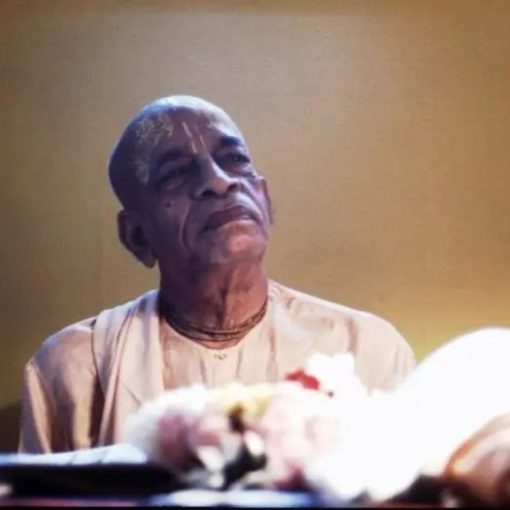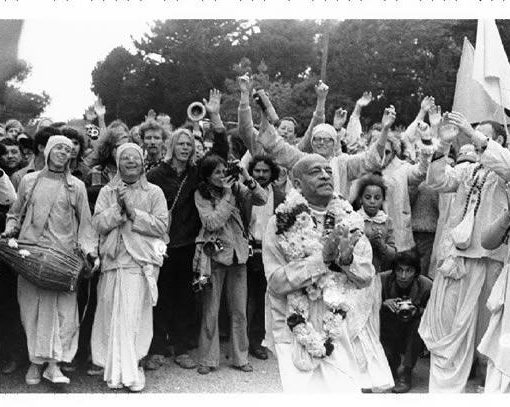The Unique Liberation of Bhakti
In the Vedic tradition, there are various conceptions of liberation, each representing a different path to transcend the suffering of material existence. Among these, the concept of kaivalya, or merging with the impersonal Brahman, is often sought by those who practice jnana-yoga (the path of knowledge) and seek an experience of oneness with the Absolute. However, for practitioners of bhakti-yoga (the path of devotion), the ultimate liberation is not merging but establishing an eternal relationship as a servant of Krishna. Srila Prabhupada’s teachings on the Nectar of Devotion illuminate this distinction profoundly, explaining how bhakti offers a uniquely fulfilling liberation that is far beyond mere oneness.
Kaivalya: Liberation Through Merging
In the jnana-yoga path, the goal is to realize that the individual soul (jivatma) and the supreme, impersonal consciousness (Brahman) are ultimately one. This realization leads to liberation, known as kaivalya, which means the state of being alone or separate from material influence. This form of liberation is about the dissolution of the individual ego and merging into the eternal oneness of Brahman.
The philosophy behind kaivalya views the soul as a spark of the infinite Brahman. According to this view, the soul’s individuality is an illusion created by material conditioning, and once the veil of illusion is lifted, the soul merges back into its original state of undifferentiated oneness with Brahman. In this state, there is no sense of individual personality or relationship, only the bliss of undivided unity and stillness.
For many, kaivalya is seen as an ultimate liberation from the cycles of birth and death, freeing one from the dualities of joy and sorrow, pleasure and pain.
The Green Bird on the Green Tree: An Analogy for Merging vs. Bhakti Liberation
A classic analogy used to explain the concept of merging is the example of a green bird sitting on a green tree. At first glance, the green bird blends in with the tree so perfectly that it seems to disappear; it becomes nearly indistinguishable from the tree itself. Similarly, in the path of kaivalya, the soul merges into the impersonal Brahman, losing all sense of individuality. Just as the bird seems to vanish into the tree, the individual soul seemingly dissolves into the vast, undifferentiated oneness of Brahman.
However, although the green bird may appear to be part of the tree, it remains distinct and can fly away whenever it chooses. In the same way, even after merging with Brahman, the individuality of the soul remains latent. This merging is temporary and incomplete because it lacks the fulfillment of the soul’s inherent nature as a unique, conscious being.
Why Bhakti Offers More than Merging
In contrast to merging with Brahman, bhakti liberates the soul in a way that allows for the full expression of its individuality. Instead of vanishing into the vastness of Brahman, a bhakta (devotee) experiences liberation by serving and loving Krishna in a personal relationship, which brings the ultimate satisfaction to the soul. The green bird in this case does not disappear but rather finds a place of joy on a branch where it can sing, interact, and engage in a loving relationship with the tree—symbolizing the dynamic, blissful relationship between the individual soul and Krishna.
For a devotee, merging into Brahman is like trying to lose oneself in the tree, missing the joy and fulfillment of life as an individual being who can experience love, service, and reciprocation with Krishna. Bhakti allows the soul to soar freely, like the bird that does not disappear but lives in harmony with the tree, expressing its natural nature while remaining distinct.
Reflections on the Green Bird Analogy
The green bird on the green tree reminds us that the soul’s true fulfillment is not in losing itself but in finding a place of joy and purpose through service. By understanding this analogy, we can see why Srila Prabhupada and other acharyas (spiritual teachers) stress the superiority of bhakti liberation over kaivalya. While the path of merging leads to oneness without differentiation, the bhakti path maintains individuality in a way that allows the soul to experience its full potential in loving exchanges with Krishna.
This analogy serves as a reminder that true liberation doesn’t require us to dissolve into oneness but rather to elevate our consciousness in love and service, fulfilling our eternal nature as distinct, individual souls in relationship with the Supreme.
Bhakti Liberation: The Joy of Personal Relationship
In contrast, bhakti-yoga emphasizes the soul’s eternal individuality and its unique, personal relationship with Krishna. Rather than aiming to dissolve one’s individuality, the bhakti path cultivates it, celebrating the soul’s eternal nature as a servant of Krishna. This is a form of liberation that doesn’t involve merging with the Supreme in an impersonal way but instead being liberated in service to the Supreme Personality, Krishna.
In the bhakti tradition, the soul is understood not as a spark to be absorbed back into an impersonal energy but as an individual servant of the Divine with a unique personality and eternal relationship with Krishna. Liberation in bhakti is called moksha, but it is more specifically referred to as moksha through seva, or liberation through service. The goal is to be engaged in Krishna’s service with love and devotion, whether it is in this life or in the spiritual world, in Krishna’s eternal abode.
Srila Prabhupada explains that for a bhakta (devotee), liberation does not mean the end of individual existence but rather freedom from material bondage. In bhakti liberation, the soul’s individual personality is fully expressed in a loving relationship with Krishna. This liberation is often described as mukti, specifically sa-yujya-mukti (liberation through personal service), which allows the soul to enter Krishna’s divine pastimes and be eternally engaged in loving service.
Why Merging Is Considered Inferior to Bhakti Liberation
- Lack of Personal Relationship: In kaivalya, the soul merges into the impersonal Brahman, losing any sense of individuality or personal experience. This is seen as limiting within the bhakti tradition, where the soul’s ultimate fulfillment is in a personal relationship with Krishna, characterized by the joy of serving and loving exchanges.
- Absence of Bliss in Service: Bhakti liberation is centered around the bliss of serving Krishna. In kaivalya, there is no one to serve, no expression of love or joy in a relationship, and no dynamic experience. It is a static state of oneness, which lacks the vibrancy and depth of emotions found in the bhakti path.
- Krishna’s Desire for Relationship: According to the Bhagavad-gita and Srimad Bhagavatam, Krishna himself enjoys relationships with his devotees and takes pleasure in their service. The Lord appreciates his devotees’ loving efforts and reciprocates with them, something that the impersonal Brahman cannot do. The bhakti path aligns with Krishna’s desire for a personal connection with each soul, making it a more intimate and fulfilling form of liberation.
- The Eternal Individuality of the Soul: In the bhakti tradition, the individuality of the soul is not a temporary state but an eternal truth. The soul’s personality and uniqueness are celebrated rather than dissolved. Bhakti recognizes that the soul’s individuality enhances its ability to love and serve Krishna personally, which brings a more complete satisfaction than merging into Brahman.
- Devotees’ Natural Aversion to Merging: For a devotee, the idea of merging into Brahman feels like a loss rather than a gain. Devotees cherish the opportunity to serve Krishna and participate in His divine pastimes, considering this the highest pleasure. The impersonal state is viewed as a form of spiritual suicide, where the soul’s potential for loving exchange with Krishna is abandoned.
Case Study: The Lives of Great Bhaktas
The lives of renowned devotees such as Prahlada Maharaja, Hanuman, and the gopis of Vrindavan illustrate the unique bliss of bhakti liberation. Each of these devotees was given the chance to merge into Brahman, yet they chose the path of service to Krishna instead. Their preference highlights the superiority of bhakti liberation over kaivalya.
- Prahlada Maharaja: Offered any boon by Lord Narasimhadeva, Prahlada requested only to serve the Lord and forgo any personal liberation. His choice underlines the devotee’s desire for loving service rather than impersonal liberation.
- Hanuman: Hanuman could have aspired to merge into the Supreme, yet his eternal desire remains to serve Lord Rama. He values the joy of service over any sense of personal liberation or oneness.
- The Gopis of Vrindavan: The gopis epitomize selfless devotion, living only to serve and please Krishna. They embody the highest form of bhakti, and their sole desire is to be with Krishna in a personal, loving relationship, never aspiring to merge but rather to intensify their love and service.
Reflection: The Unique Fulfillment of Bhakti
The journey of bhakti brings fulfillment through surrender and service, which is absent in the static state of kaivalya. For those on the bhakti path, liberation without Krishna’s loving reciprocation is incomplete. The ultimate goal of a bhakta is not to escape existence but to realize their true nature as a servant of the Supreme, experiencing the joy of surrender and divine love.
In his lectures, Srila Prabhupada often emphasizes that bhakti liberation is the natural state of the soul. Being a part of Krishna’s transcendental pastimes, engaged in loving service, is the most natural and joyous experience for the soul, which kaivalya cannot offer. Srila Prabhupada explains that only in bhakti does one find true happiness, as the soul’s eternal nature is one of service, not of static oneness.
Conclusion: Choosing Bhakti over Merging
The distinction between kaivalya and bhakti liberation reflects a choice: the choice to dissolve one’s individuality in an impersonal oneness, or to embrace and celebrate individuality through a loving relationship with Krishna. Srila Prabhupada’s teachings inspire us to choose the path of bhakti, where liberation is not an escape but an opportunity to love and serve eternally.
Through the bhakti path, we experience the highest form of liberation, which is characterized by the boundless joy of serving Krishna. This liberation is personal, dynamic, and filled with loving exchanges. For a devotee, the path of bhakti leads to the ultimate perfection of life, where liberation means not merely freedom from material bondage but entry into an eternal relationship with the Supreme Lord





